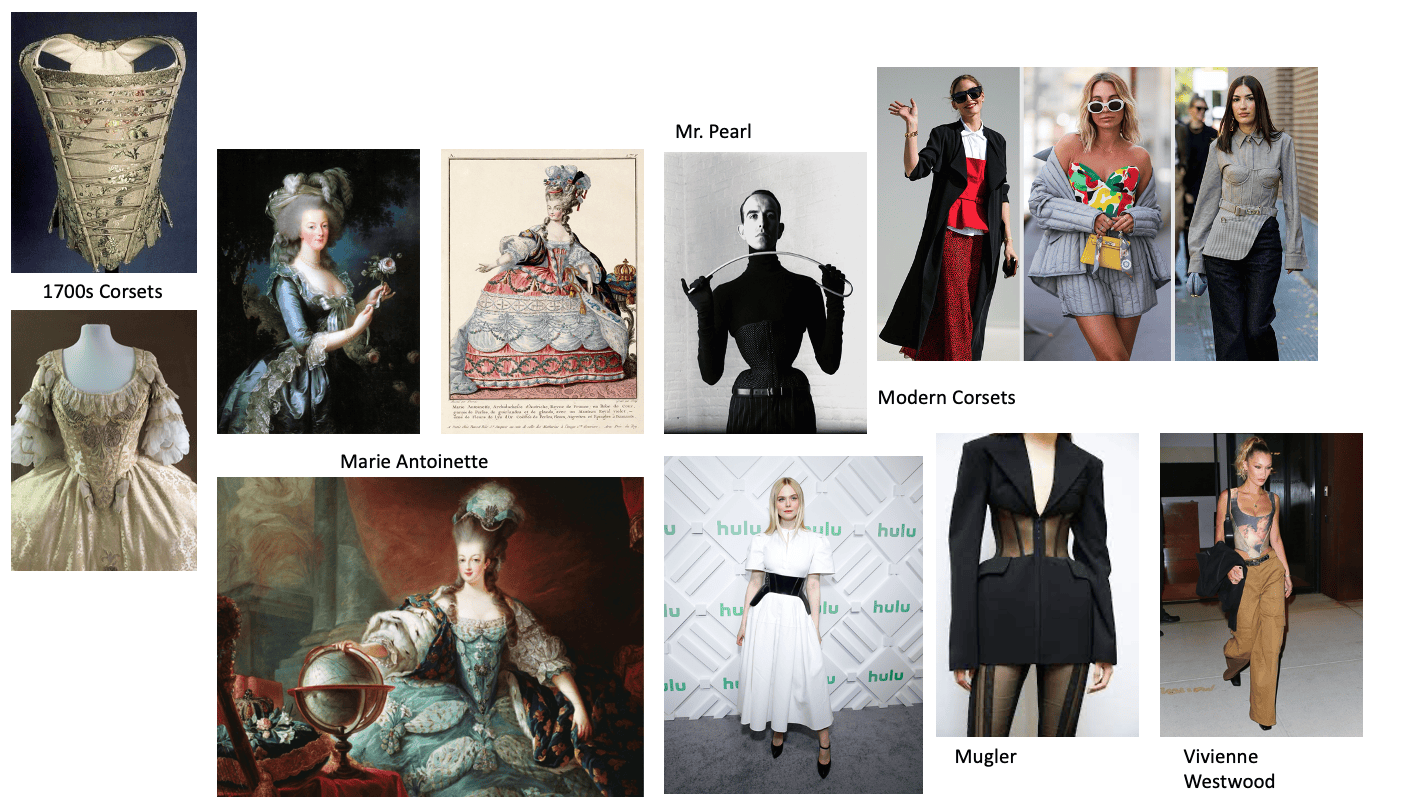
Iconic fashion designers such as Thierry Mugler, Vivienne Westwood and Mr. Pearl have all redesigned the corset to be reintroduced to the modern market. All three apply a modern twist to the classical garment by changing materials, shapes, and often, the purpose. For example, the Mugler corset on the mood board is a part of the jacket so it is just one garment, this is a completely new rendition of an original piece.
Their work is inspired by corsetry from fashion history, Corsets in 1700s France were made fashionable by Marie Antoinette who was seen as a fashion staple by the court and its people. This made corsets much more popular during her time in power. As France was at war at this moment this meant that a change was happening in the fashion industry and scientific study of human anatomy was interlinking with garment making. The corsets that were most popular were ones that contained whalebone and constricted the waist to give a slender look with a pointed waistline. In these times, travelling weavers/tailors introduced many different fabrics and materials to France so royalty and peasants alike were gaining exposure to innovative ways to use leftover materials to create garments.
In modern times, the original meaning behind wearing the corset daily has now disappeared. While some women still revert to a traditional style corset for the purpose of waist training, the majority of the female population who wear corsets now wear them for the style purpose rather than practicality.

Great Blog!
Yes, it’s true that majority of the female wear corsets now wear for the style purpose rather than practicality.